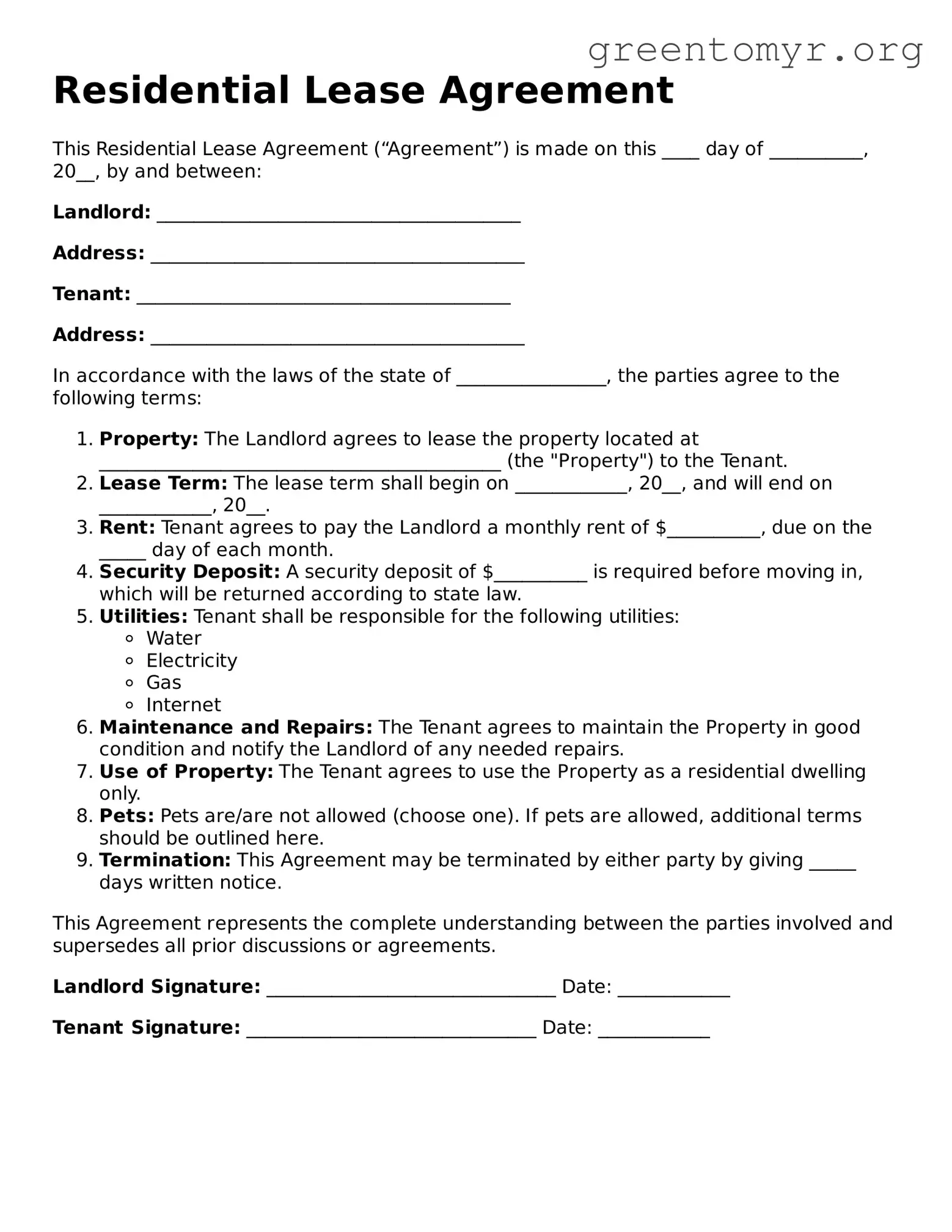Residential Lease Agreement
This Residential Lease Agreement (“Agreement”) is made on this ____ day of __________, 20__, by and between:
Landlord: _______________________________________
Address: ________________________________________
Tenant: ________________________________________
Address: ________________________________________
In accordance with the laws of the state of ________________, the parties agree to the following terms:
- Property: The Landlord agrees to lease the property located at ___________________________________________ (the "Property") to the Tenant.
- Lease Term: The lease term shall begin on ____________, 20__, and will end on ____________, 20__.
- Rent: Tenant agrees to pay the Landlord a monthly rent of $__________, due on the _____ day of each month.
- Security Deposit: A security deposit of $__________ is required before moving in, which will be returned according to state law.
- Utilities: Tenant shall be responsible for the following utilities:
- Water
- Electricity
- Gas
- Internet
- Maintenance and Repairs: The Tenant agrees to maintain the Property in good condition and notify the Landlord of any needed repairs.
- Use of Property: The Tenant agrees to use the Property as a residential dwelling only.
- Pets: Pets are/are not allowed (choose one). If pets are allowed, additional terms should be outlined here.
- Termination: This Agreement may be terminated by either party by giving _____ days written notice.
This Agreement represents the complete understanding between the parties involved and supersedes all prior discussions or agreements.
Landlord Signature: _______________________________ Date: ____________
Tenant Signature: _______________________________ Date: ____________
